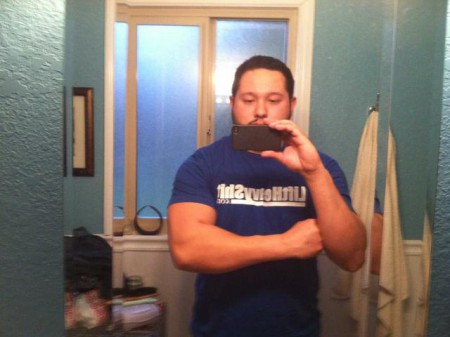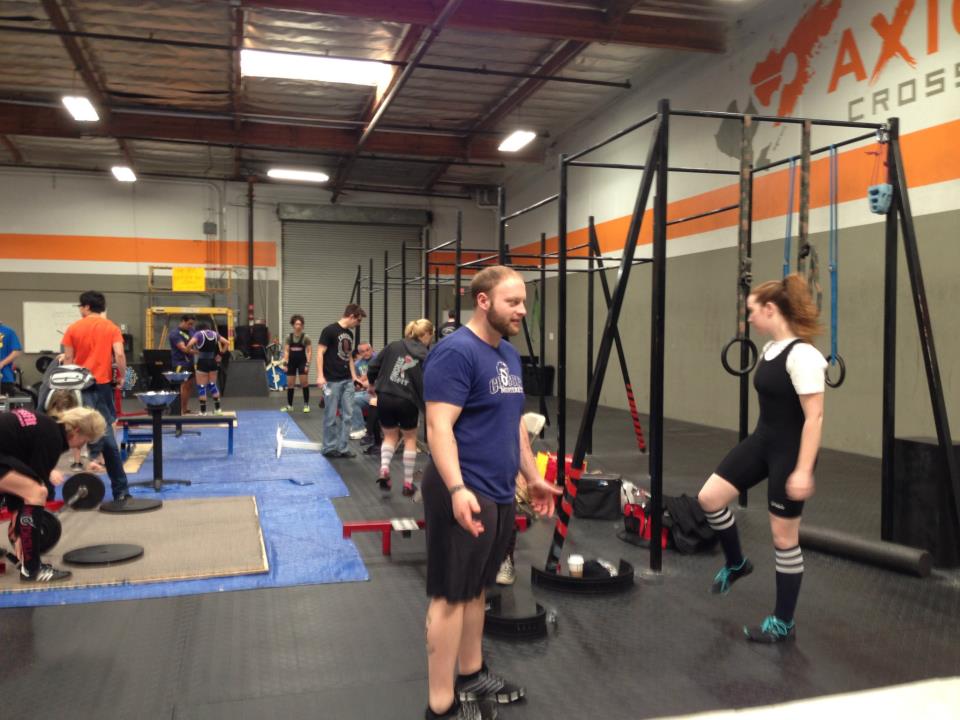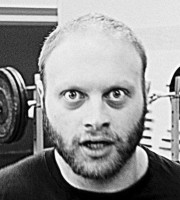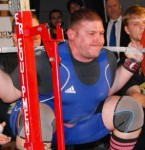Hello, fellow carcass-eating-lifting-enthusiasts.
I’m writing under my user name because I thought it would be easier for a couple of work reasons. I met Justin at one of his seminars a couple of years ago, at which point I realized why I had a recurring lower back injury: because I was squatting like a constipated sloth. The path that led me to Justin’s seminar was a typical one. Former CrossFitter, bumbling around with internet programs not really knowing what I was doing. I’ll summarize how it happened.
I realized I needed to get stronger prior to my SOF selection, I was running a lot when the opportunity came up and I was pretty skinny. My standard body building style program from the military PTI worked pretty well for a while, and got me strong enough for selection (obviously I did a lot of other training also). On a shared hard drive in Afghanistan I found a program from a guy called Ross Enamait (whose stuff I still love), CrossFit programs, and various other info. I started with something I knew I could do well, the high intensity interval style circuit training, which is nothing new. I noticed that the new ideas and workouts I found on the internet gave me great challenges and variety. The Olympic lifts and even the basic lifts were still a bit daunting for me because I’d never really had any coaching in them. Unfortunately, this experimentation resulted in a right knee injury from heavy lunges and squats with bad form.
It became pretty apparent I wasn’t strong enough overall. I was pretty fast and agile, could do a few party trick movements, but needed to carry heavy weight on my back which demands strength.
So I switched gears to a program the guys I worked with in the SOF community found – Military Athlete by Rob Shaul. I started to see some real gains for the first six months but I combined the training (which is high volume) with a low carb paleo diet. Why? Because I am an idiot, that’s why, and I speak of this to caution any of you from doing the same. From what I’ve seen on this site, most of you seem smarter than that. Rob’s training is legit and I’d recommend checking it out if you’re in the military. However, for me personally I found the volume too much to do it year round (note: I was eating low carb as well). I also tried to make my own programs based on Rob’s but doing the wrong exercises with the wrong volume.
To cut a long story short, 3 x 8 deadlifts at 90% 1RM twice a week later, I hurt my back (“No shit!” I hear you say). Yep, well I thought I knew what I was doing; I didn’t. Meanwhile, I’m eating paleo on operations overseas, dealing with gastro symptoms from the gluten in the MREs, and losing weight (I have shitting stories but you don’t want to hear that). I thought I was training and eating smart. I wasn’t. It all came to a head when I nearly fell out on a long extraction march with a heavy pack. I had never, ever come close to falling out from my team before and I took a good hard look at myself. I learned some valuable lessons.
So I saw Justin’s seminar and got some coaching tips. I rehabbed the shit out of my back with mobility drills, a lacrosse ball and PVC pipe, and I started upping the carbs in the diet.
Since I got some coaching on how to lift from Justin, I have not had a serious injury. I believe most of this is due to the fact I have focused more on lifting and mobility and added endurance/speed work when I needed to.
I’d summarize what I’ve learned so far as follows (lower your expectations, this will may be underwhelming):
1. Get a coach to look at your lifts, even online coaching is better than none.
2. Program to what you need to improve, not what you’re already good at.
3. Strength is vital to every other aspect of your game. If you neglect mistress Strength, she is a jealous bitch and will make you pay.
4. Paleo diet works great for me, but don’t go low carb unless you have a specific and valid reason to do so (and preferably get advice on how to do it from someone who has experience).
5. Don’t take programs off the internet and modify them. See point 1.
I’m currently training for an ultra marathon, which should definitely draw some heat from Brent, Chris and the regulars (and I welcome the smack talk). It’s a bucket list thing. I’m doing one and one only. I’m still lifting though.
The Paleo Chronicles are another post, if anyone cares to hear about that. Given Justin has just written a book, I’d start with that.
Looking forward to some posts from you other guys/girls who read the site. Some real strong, fit people read this resource and I learn a lot from all you guys.
Cheers.
– olpainless
Olpainless is a 70s Big reader who has been in military for 19 years. He was recently employed with the Air Force in a special operations role for six years, but now drives a desk.Training with a strength focus has gone from being a job requirement to an integral part of his life and has helped him to manage and reduce injuries. He has been eating a Paleo-based diet for three years and has experimented with lots of variations of this diet whilst dealing with a demanding work schedule.

 Paul Sousa is an amateur strongman enthusiast, general strength enthusiast, Android app enthusiast, husband, father, and is enthusiastic about burritos and hilariously oversized steaks.
Paul Sousa is an amateur strongman enthusiast, general strength enthusiast, Android app enthusiast, husband, father, and is enthusiastic about burritos and hilariously oversized steaks. 





